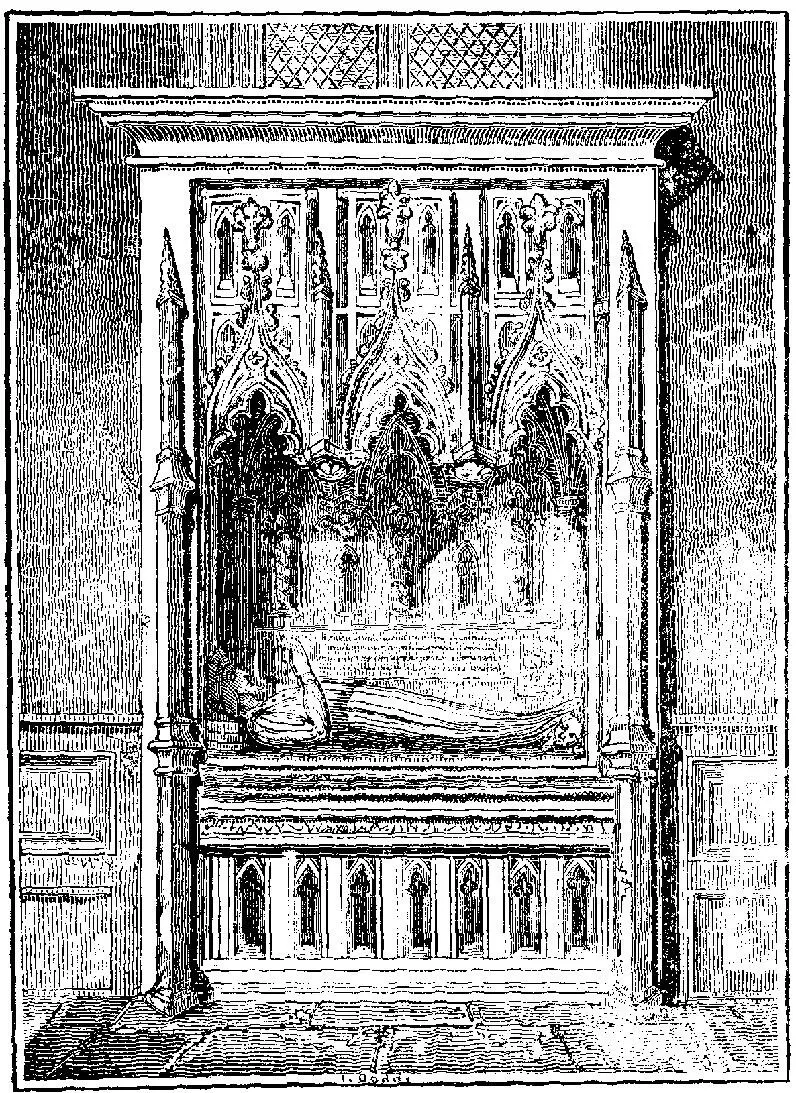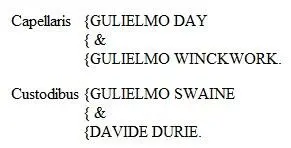Various - The Mirror of Literature, Amusement, and Instruction. Volume 13, No. 364, April 4, 1829
Здесь есть возможность читать онлайн «Various - The Mirror of Literature, Amusement, and Instruction. Volume 13, No. 364, April 4, 1829» — ознакомительный отрывок электронной книги совершенно бесплатно, а после прочтения отрывка купить полную версию. В некоторых случаях можно слушать аудио, скачать через торрент в формате fb2 и присутствует краткое содержание. Жанр: foreign_antique, periodic, Развлечения, foreign_edu, на английском языке. Описание произведения, (предисловие) а так же отзывы посетителей доступны на портале библиотеки ЛибКат.
- Название:The Mirror of Literature, Amusement, and Instruction. Volume 13, No. 364, April 4, 1829
- Автор:
- Жанр:
- Год:неизвестен
- ISBN:нет данных
- Рейтинг книги:4 / 5. Голосов: 1
-
Избранное:Добавить в избранное
- Отзывы:
-
Ваша оценка:
- 80
- 1
- 2
- 3
- 4
- 5
The Mirror of Literature, Amusement, and Instruction. Volume 13, No. 364, April 4, 1829: краткое содержание, описание и аннотация
Предлагаем к чтению аннотацию, описание, краткое содержание или предисловие (зависит от того, что написал сам автор книги «The Mirror of Literature, Amusement, and Instruction. Volume 13, No. 364, April 4, 1829»). Если вы не нашли необходимую информацию о книге — напишите в комментариях, мы постараемся отыскать её.
The Mirror of Literature, Amusement, and Instruction. Volume 13, No. 364, April 4, 1829 — читать онлайн ознакомительный отрывок
Ниже представлен текст книги, разбитый по страницам. Система сохранения места последней прочитанной страницы, позволяет с удобством читать онлайн бесплатно книгу «The Mirror of Literature, Amusement, and Instruction. Volume 13, No. 364, April 4, 1829», без необходимости каждый раз заново искать на чём Вы остановились. Поставьте закладку, и сможете в любой момент перейти на страницу, на которой закончили чтение.
Интервал:
Закладка:
Various
The Mirror of Literature, Amusement, and Instruction / Volume 13, No. 364, April 4, 1829
TOMB OF GOWER, THE POET

Tomb of Gower, the Poet.
Dr. Johnson has dignified Gower with the character of "THE FATHER OF ENGLISH POETRY"; so that no apology is required for the introduction of the above memorial in our pages. It stands in the north aisle of the church of St. Mary Ovrie, or St. Saviour, Southwark; and is one of the richest monuments within those hallowed walls. The tomb consists of three Gothic arches, the roof of which springs into several angles. The arches are richly ornamented with cinnquefoil tracery, roses, and carved work of exquisite character. Behind these arches are two rows of trefoil niches; and between them also rises a square column, of the Doric order, surmounted by carved pinnacles. On the extremity of the arches is placed richly carved foliage, of a similar character to that which ornaments the edges of the arches; and in the centre are circles enclosing quatrefoils. From the bases of the two middle square columns descend roses, and other foliage; and from the lower extremities of the interior arches descend cherubim. Within three painted niches, are the figures of Charity, Mercy, and Pity, round whom are entwined golden scrolls bearing the following inscriptions:
" Pour la Pitie Jesu regarde .
Et tiens cest Ami en saufve Garde ."
Jesu! for thy compassion's sake look down,
And guard this soul as if it were thine own.
On the second scroll is written:
" Oh, bon Jesu! faite Mercy,
Al' Ame dont le Corps gist icy ."
Oh! good Jesu! Mercy shew
To him whose body lies below.
On the third scroll is written:
" En toy qui es Fitz de Dieu le Pere,
Saufve soit qui gist sours cest Pierre ."
May he who lies beneath this stone,
Be sav'd in thee, God's only son! 1 1 These translations are somewhat freely made.
Between each of these figures are painted blank trefoil niches; and below the whole, on a plain tablet, the following inscription:
"Armiger scutum nihil a modo fut tibi tutum,
Reddidit immolutum, morti generali tributum,
Spiritus exutum se gaudeat esse solutum,
Est ubi vistutum, Regnum sive labe statutum."
On the left side:
"Hoc viri
Inter inclytos memorandi
Monumentum sepulchrali,
Restaurari propriis impensis
Parocnia hujus meolæ
On the right side:
Capellaris {GULIELMO DAY

Aotante humiblimo Pastore DAVIDE GILSON.
And below the effigy runs the following:—
"Hic jacet JOHANNIS GOWER,
Armiger, Anglorum Poeta celeberrimus,
ac huic sacro Edificio Benefactor, insignis
temporibus Edw. III. et Rich. II. "
Here lieth John Gower, esq., a celebrated
English poet, also a benefactor to
this sacred edifice, in the time of Edward
III. and Richard II.
The base of the monument has seven trefoil niches, within as many plain-pointed ones.
The effigy of the poet is placed above, in a recumbent posture, beneath the canopy just described. He is dressed in a gown, originally purple, covering his feet, which rest on the neck of a lion. A coronet of roses adorns his head, which is raised by three folio volumes, labelled on their respective ends, "Vox Clamantis," "Speculum Meditantis," and "Confessio Amantis." Round the neck hangs a collar of SSS. Over the lion, on the side of the monument, are the arms of the deceased, hanging, by the dexter corner, from an ancient French chappeau, bearing his crest. The dress of this effigy has, probably, given rise to the conjectures concerning the rank in life which Gower maintained; but that is too precarious a ground on which to form a decided opinion on such a point.
Gower's arms are, Argent on a cheveron, azure, three leopard's heads, Or. Crest. On a chappeau turned up with ermine, a talbot, serjant, proper.
A little eastward of Gower's monument is part of a pillar, descending from the roof, with a conical base. It is said to be hollow, and has, indeed, somewhat the appearance of a narrow chimney flue.
A biographical outline of Gower may not be unacceptable. He is said by Leland to have descended from a family settled at Sittenham, in Yorkshire. He was liberally educated, and was a member of the Inner Temple; and some have asserted that he became Chief Justice of the Common Pleas; but the most general opinion is that the judge was another person of the same name. It is certain that Gower was a person of considerable weight in his time; even had he not given such ample proofs of his wealth and munificence in rebuilding the conventual church of St. Mary Ouvrie, If he did not actually rebuild the church, as has been asserted, it is well known that he contributed very largely to that undertaking. Perhaps the only fact in detail which it is now possible to ascertain with certainty is, that he founded a chantry in the chapel of St. John, now the vestry.
Gower is supposed to have been born before Chaucer, who flourished in the early part of the fourteenth century, and is believed to have contracted an acquaintance with Gower during his residence in the Middle Temple. Chaucer himself, after his travels on the continent, became a student of the Inner Temple. The contiguity of these inns of court, the similarity of their studies and pursuits, and particularly, as they both possessed the same political bias; Chaucer attaching himself to John of Ghent, Duke of Lancaster, by whom, as well as by the Duchess Blanche, he was greatly esteemed; and Gower giving his influence to Thomas of Woodstock, both uncles to King Richard II.—would naturally produce a considerable degree of friendship and esteem between the two poets.
Gower did not long survive his friend Chaucer. In the first year of the reign of Henry IV. he appears to have lost his sight; but whether from accident or from old age (for he was then greatly advanced in years) is not known. This misfortune happened but a short period before his death, which took place in the year 1402, about nine years after he had completed the "Confessio Amantis," a work from whence he derived the honour of being ranked among the English poets.
The "Confessio" of Gower is said to have owed its origin to a request made to the poet by King Richard II.; who, accidentally meeting Gower on the Thames, called him into the royal barge, and enjoined him "to booke some new thing." This, therefore, was not the first of his poetical productions, though it is universally admitted to have been his chief, and that on which his principal reputation depends; and into which "it seems to have been his ambition to crowd all his erudition." It is, however, the last of the volumes, the titles which are painted on his monument in this church, and is supposed to be the last he ever wrote, at least of any important extent.
The poetical histories of Gower and Chaucer are intimately connected; yet there is a remarkable difference of opinion and pursuit in their respective writings. It must be confessed that to Chaucer, and not to Gower, should be applied the flattering appellation of "the father of our poetry;" though, as Johnson says, he was the first of our authors who can be said to have written English. To Chaucer, however, are we indebted for the first effort to emancipate the British muse from the ridiculous trammels of French diction, with which, till his time, it had been the fashion to interlard and obscure the English language. Gower, on the contrary, from a close intimacy with the French and Latin poets, found it easier to follow the beaten track. His first work was, therefore, written in French measure, and is entitled "Speculum Meditantis." There are two copies of this book now in the Bodleian Library at Oxford. It contains ten books, and consists of a collection of precepts and examples, compiled from various authors, recommending the chastity of the marriage bed.
Читать дальшеИнтервал:
Закладка:
Похожие книги на «The Mirror of Literature, Amusement, and Instruction. Volume 13, No. 364, April 4, 1829»
Представляем Вашему вниманию похожие книги на «The Mirror of Literature, Amusement, and Instruction. Volume 13, No. 364, April 4, 1829» списком для выбора. Мы отобрали схожую по названию и смыслу литературу в надежде предоставить читателям больше вариантов отыскать новые, интересные, ещё непрочитанные произведения.
Обсуждение, отзывы о книге «The Mirror of Literature, Amusement, and Instruction. Volume 13, No. 364, April 4, 1829» и просто собственные мнения читателей. Оставьте ваши комментарии, напишите, что Вы думаете о произведении, его смысле или главных героях. Укажите что конкретно понравилось, а что нет, и почему Вы так считаете.












